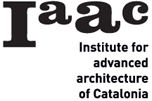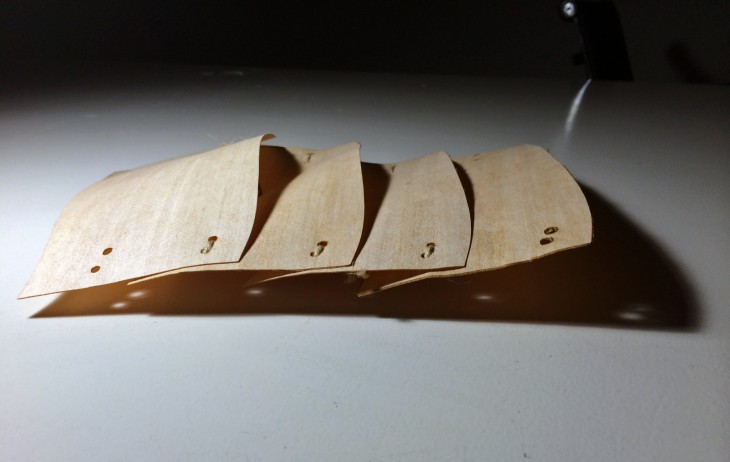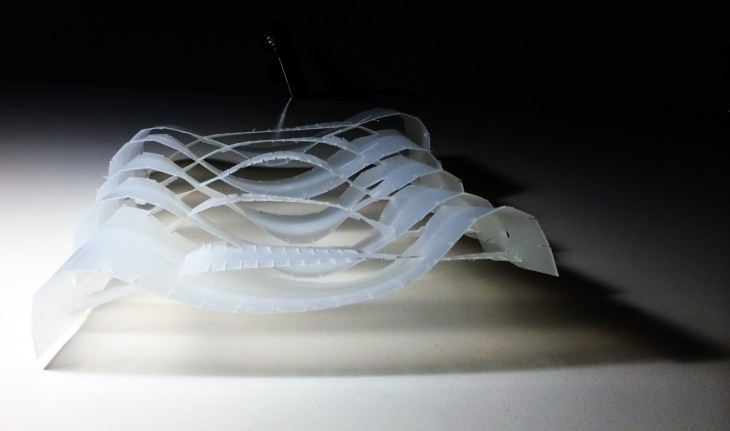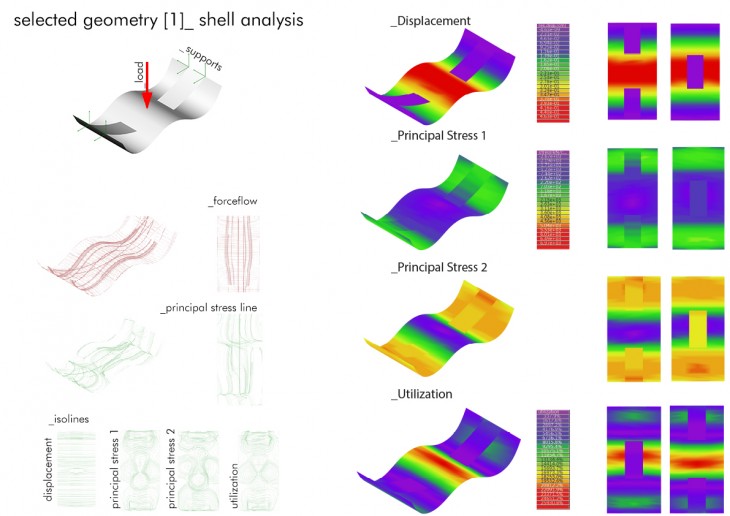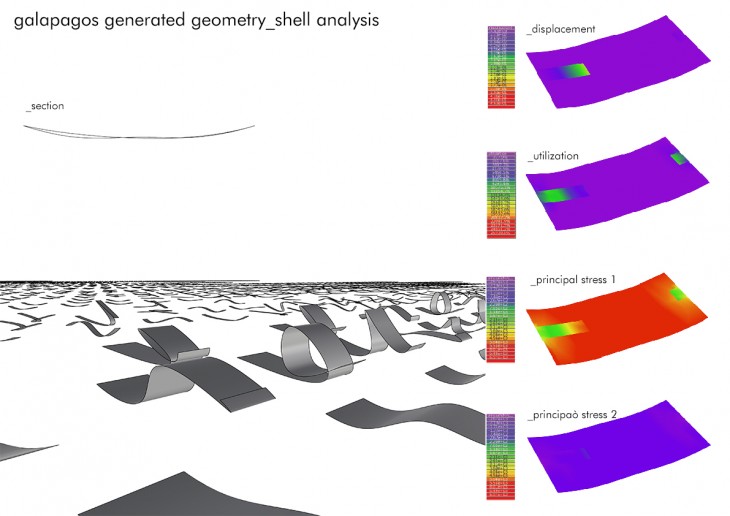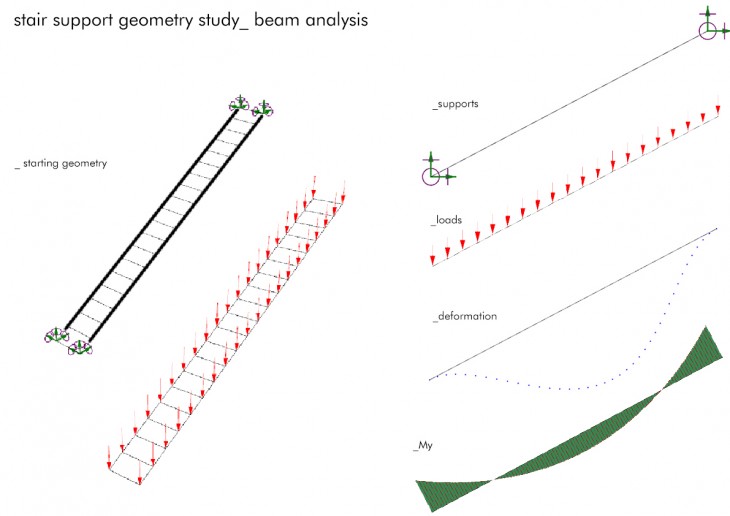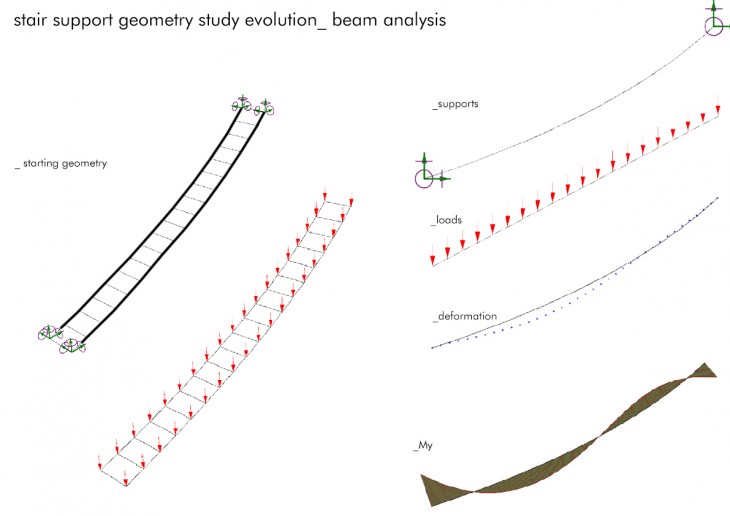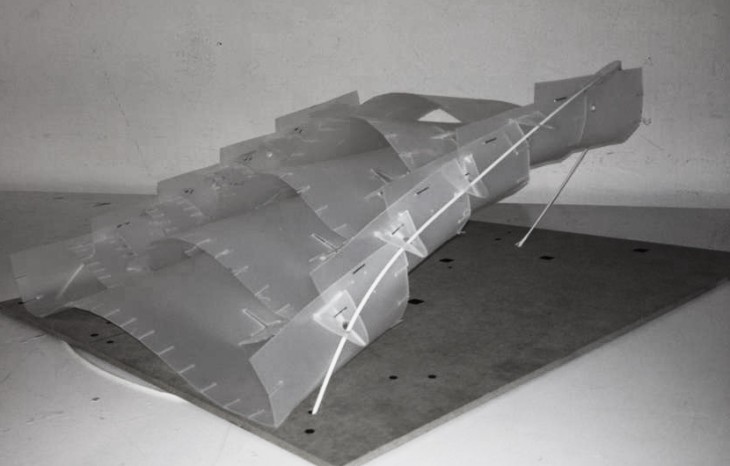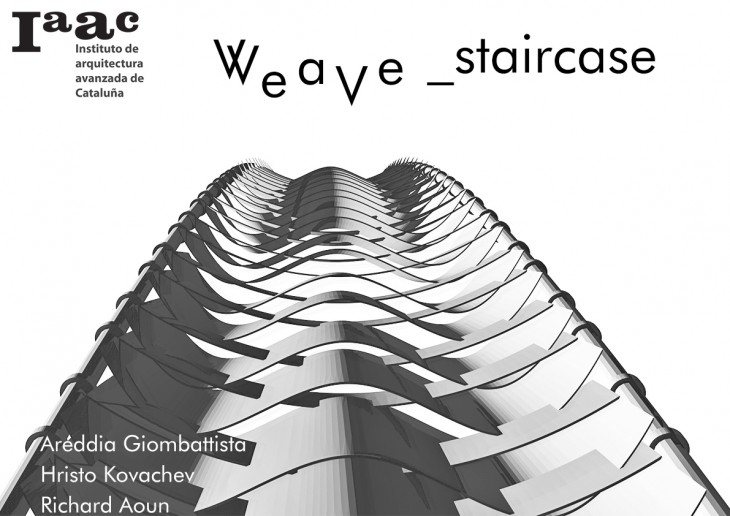
We started the staircase exercise with the idea of using active bending on a singular element, whom in repetition and connection with its replicates can form an interesting and organic stair.
Our first prototype made from wood clearly showed us that active bending with only one element is hard to do.
So we combined the first element with a second element, where both are bended true interlocking with each other providing stress with the structure. The elements interlock in four points providing five distances we could play with.
In Karamba we compared three different sections to find witch positions are optimal for a structural stair.
From the numbers generated by the software it was clear that the first section performed better than the others.
Making the model using the section positions showed us that in fact the structure was performing better. However there was still something missing.
Using galapagos we tried to find the further best geometry but the result was unsuccessful, so we come back to the first result.
After the beam analysis we found the better geometry for the row support, in order to reduce the My.
Connecting the sides of the steps with rope provided the missing overall stability of the system.
Conclusion: Going back and forth from physical model to digital model showed us the benefits of using both instead of just one for the optimization of a structure. Combining the strong sides of both methods is the wright way.
